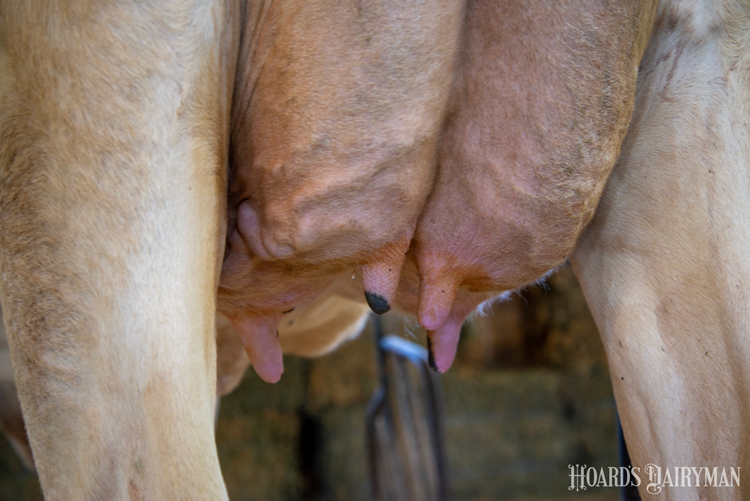
When we find abnormal milk, a hard quarter, or both in a cow, we are detecting the inflammation that comes with mastitis. Diagnosing the intramammary infection to find the best treatment option, however, requires further investigation.
Inflammation and infection are related but different, said John Middleton during the National Mastitis Council Annual Meeting. “We’re really making a diagnosis to make a decision,” he explained, referring to how we handle the detected inflammation.
A first distinction to make is on the severity of the case to determine how much supportive care may be needed. Middleton, a professor at the University of Missouri College of Veterinary Medicine, explained that a change in the milk indicates a mild case, while a moderate case creates changes in the milk and the udder. If a cow has bad milk, changes in the udder or quarter, and appears systemically sick, it is a severe case.
Once we’ve detected mastitis, making a diagnosis means culturing a milk sample. At the very least, this will help you separate gram negative cases from gram positive cases, Middleton said. Antibiotics are generally not effective against gram negative pathogens, so identifying those cases will help you avoid spending time and money on treating them.
Middleton urged that culturing a milk sample begins with taking an aseptic milk sample. He advised predipping the teat(s) and then cleaning them with a swab soaked in alcohol. Collect a few streams of milk into a sterile vile or tube, never allowing the teat to touch the cap or sides of the tube. Begin with the nearest teats and work away from you.
The milk sample must then be plated on the correct type of medium to get accurate phenotypic characteristics. Middleton noted that pathogens must have the right material to be able to grow; pathogen growth will depend on the medium. If you send milk samples to a lab for culturing, they may use a molecular machine to identify culture results, he added.
In addition to identifying if antibiotic therapy may be effective, knowing the causative pathogen will uncover if the problem came from the environment (housing, stalls, and bedding) or other cows (through cross-contamination in the parlor).
Middleton illustrated that contagious pathogens include Staphylococcus aureus, Streptococcus agalactiae, Corynbacterium bovis, and Trueperlla pyogenes. All of those are gram positive.
On the other hand, gram positive environmental pathogens include Streptococcus dysgalactiae, Streptococcus uberis, Lactococcus lactis, and Enterococcus species. Coliforms like Escherichia coli, Klebsiella species, and Enterobacter species, plus Pseudomonas and Pasturella species, are gram negative environmental concerns.
Monitoring quarter-level problems such as with milk culturing allow you to get to the root of a mastitis problem, Middleton summarized. Simpler efforts like bulk tank or test day somatic cell count and disease surveillance will also give you some degree of mastitis detection, though they can’t provide a diagnosis. Each tool has its place in the toolbox of combatting milk quality concerns.








